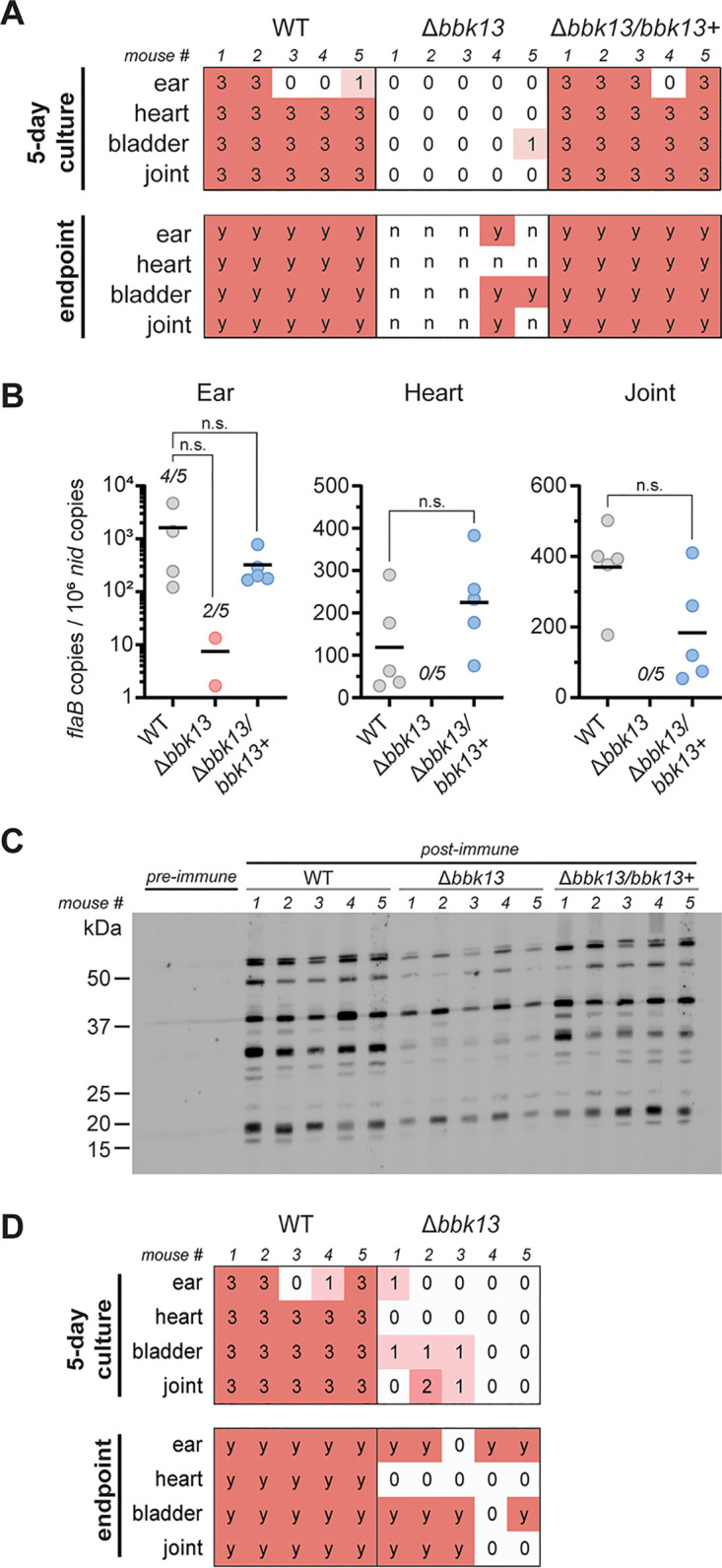FIG 4.

bbk13 is critical for B. burgdorferi infection of mice by tick transmission. Unfed nymphs infected with wild-type (WT), Δbbk13, or Δbbk13/bbk13+ B. burgdorferi were fed to repletion on groups of five C3H/HeN mice. Mice were assessed for B. burgdorferi infection 3 weeks after tick feeding by a reisolation assay, quantitative PCR, and serology. (A) Distal tissues were collected for spirochete reisolation. Semiquantitative scoring of reisolation cultures was performed following 5 days (0 indicates no spirochetes, and 1 to 3 indicate increasing spirochete densities) and 14 days (endpoint, scored for the presence [y] or absence [n] of spirochetes) of culture incubation. (B) Total DNA was extracted from ear, heart, and joint tissues. B. burgdorferi loads in each tissue were measured by quantifying B. burgdorferi flaB copies normalized to 106 mouse nid copies using quantitative PCR. The mean for each group is represented by a horizontal line. In cases where not all samples per group had detectable levels of B. burgdorferi DNA, the numbers of positive samples out of 5 mice per group are indicated. The Kruskal-Wallis test with Dunn’s multiple comparisons was used to determine statistical significance (n.s., not significant). (C) Preimmune and postimmune sera were assessed by immunoblotting for the presence of anti-B. burgdorferi antibodies. Post-immune serum from individual mice was used to blot total B. burgdorferi lysates. Preimmune sera were pooled across each of the three groups. Molecular weight standards are shown in kilodaltons. (D) Unfed Ixodes larvae were artificially infected with WT or Δbbk13 B. burgdorferi by immersion. Artificially infected larvae were allowed to feed freely to repletion on groups of five C3H/HeN mice. Three weeks after larva application, tissues were assessed for B. burgdorferi by a reisolation assay. Semiquantitative scoring of reisolation cultures was performed following 5 days (0 indicates no spirochetes, and 1 to 3 indicate increasing spirochete densities) and 14 days (endpoint, scored for the presence [y] or absence [n] of spirochetes) of culture incubation.
